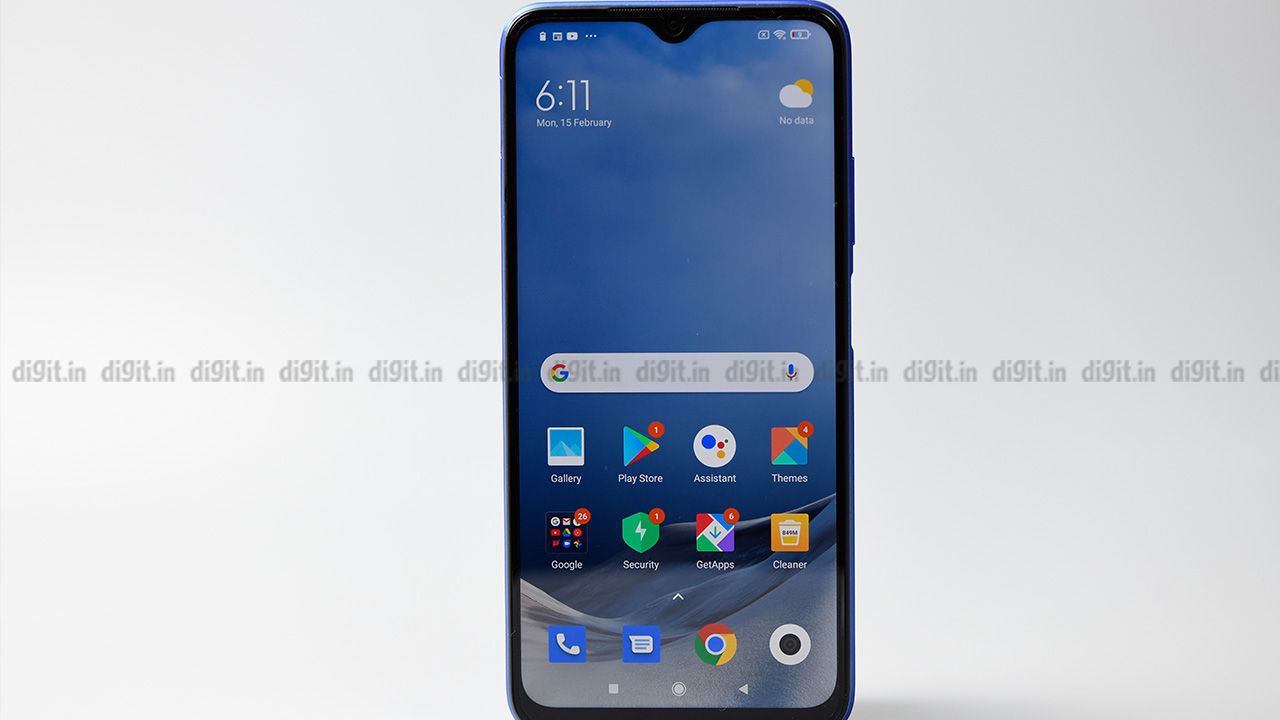
Xiaomi has come a long way to become one of the most popular smartphone brands in the country across varied price segments. The company has a solid hold over the budget segment as well, with offerings such as the Redmi Note 9 and Redmi 9 Prime at around the 10K price point. The Redmi 9 Power, starting at Rs 10,999 for the base variant, has a singular focus, with a sprinkle of additional features. And that singular focus is power, hence the nomenclature. The budget device brings with it a massive 6,000mAh battery which we’ve seen only on a few other budget devices such as the Poco M3 and the Motorola Moto G9 Power. A few other intriguing features include a Full HD+ display, a 48MP primary shooter, and a stereo speaker setup. All of these point towards the Redmi 9 Power being a pretty solid contender in the budget segment. But does it do enough to set itself apart from the competition? Let’s find out.
Redmi 9 Power: Specifications
- Processor: Qualcomm Snapdragon 662 SoC (11nm)
- GPU: Adreno 610
- CPU: Octa-core (4×2.0 GHz Kryo 260 Gold & 4×1.8 GHz Kryo 260 Silver)
- RAM: 4GB
- Storage: 64GB / 128GB
- Expandable storage: Yes, up to 512GB
- Rear cameras: 48MP primary + 8MP ultrawide + 2MP macro + 2MP depth
- Selfie camera: 8MP
- Video: 1080p at 30fps
- Battery: 6,000mAh Li-ion battery, 18W Fast Charging
- Display: 6.53-inch IPS LCD display
- Display resolution: 1080 x 2340 (Full HD+)
- OS: Android 10, MIUI 12
- Dual SIM: Yes
Redmi 9 Power: Build and design
Despite housing a gigantic 6,000mAh battery, the Redmi 9 Power keeps things relatively light. Unlike a few smartphones housing massive batteries that are usually quite hefty, the Redmi 9 Power weighs 198g, which is lower than even the Redmi 9 Pro that weighs 209g despite housing a smaller battery. The phone is 9.6mm thick, so it’s definitely not one we’d dub as slim. Still, the phone’s weight feels well-balanced and the ergonomics are good enough.
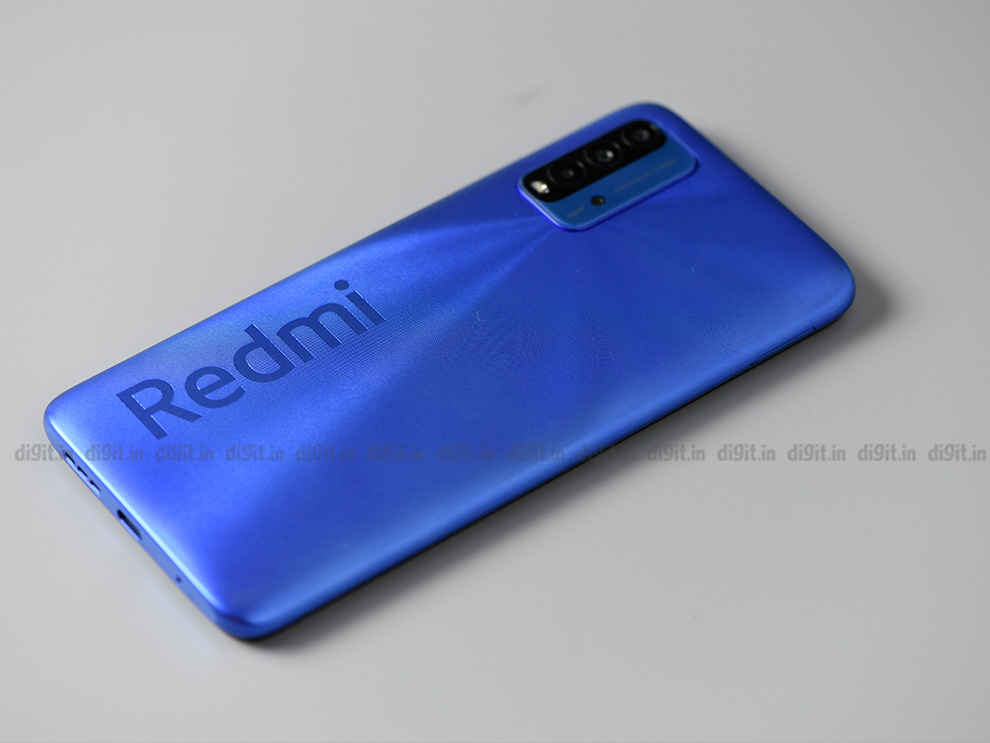
On the rear panel, you have a rather obnoxious massive Redmi branding, that frankly, we’d rather do without. The plastic back, however, has a nice textured finish with an iridescent effect that seems to beam out from the camera modules. The back has a slightly polarising design, in our opinion, you either love it or hate it. Still, the textured finish helps keep fingerprints at bay. The phone is available in four colours – Blazing Blue (which we have), Electric Green, Mighty Black, and Fiery Red. You can get a clear silicone case in the box, which is always appreciated.
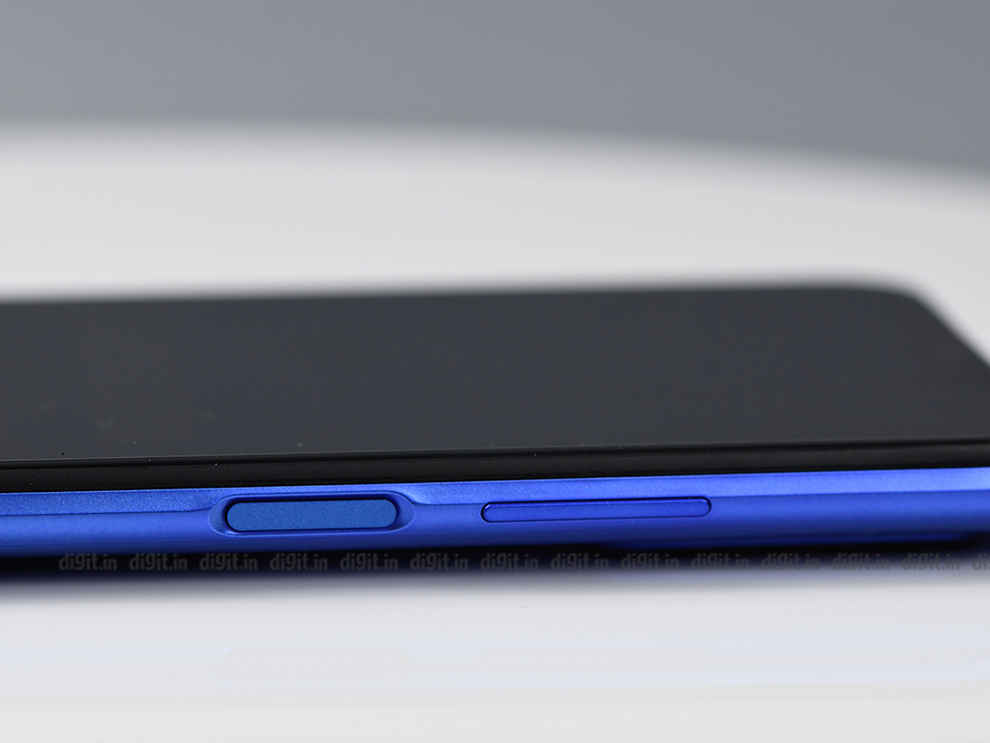
On the side, you have a side-mounted fingerprint sensor atop the power button, as well as the volume controls. The buttons are easy to reach and tactile, and the fingerprint sensor, while not the snappiest, is reliable. On the left side, there’s the SIM card tray which can house two NANO SIMs and a microSD card. The memory can be expanded up to 512GB via microSD card, so even if you get the base 64GB variant and are running short on space, you can always upgrade it. On the front, you have a dewdrop-shaped notch for the selfie camera. The front glass features Corning Gorilla Glass 3 for protection.
Staying true to the multi rear camera trend that has found its way in most budget smartphones too, the Redmi 9 Power has a quad-camera set up in a rectangular module on the back panel. The camera module does jut out slightly and there’s some wobble when it’s sitting flat on a surface, but not too much.
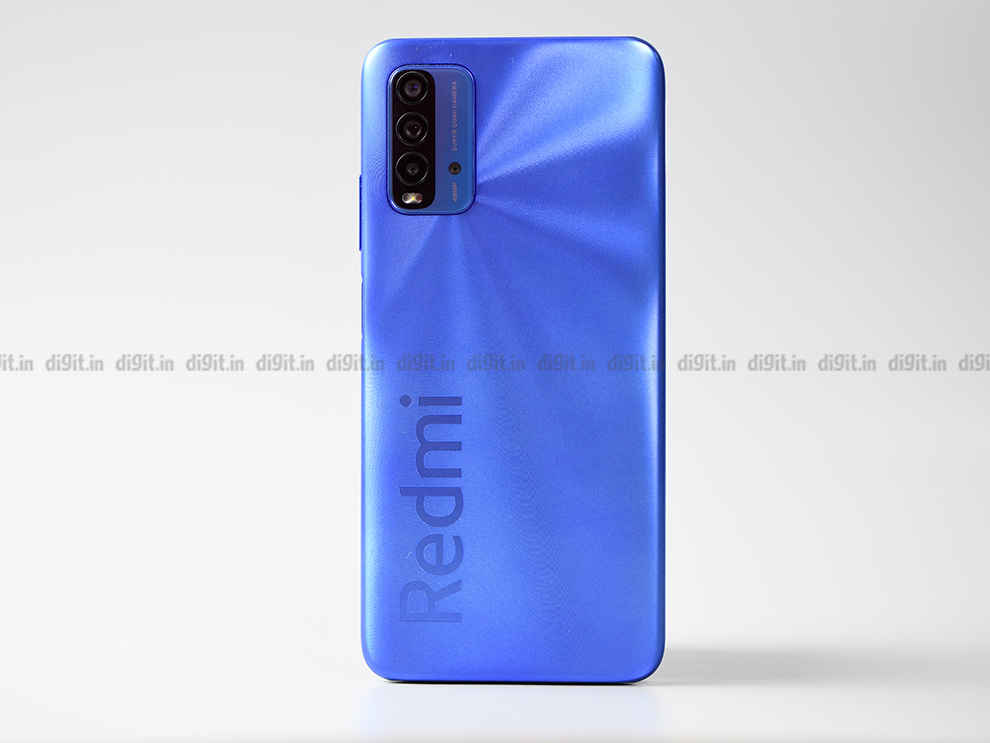
Redmi also upped the ante by adding dual stereo speakers to the smartphone, so you get both a top and downwards firing speaker, which is excellent for the price. You also have a USB-C charging port at the bottom and a 3.5mm headphone jack at the top. In the box, you get a 22.5W Fast Charging, interestingly though, the Redmi 9 Power is capped at 18W for Fast Charging. This same situation is found on the Poco M3, which we recently reviewed. Overall, the Redmi 9 Power is relatively well-built for the price but faces stiff competition from the likes of the Poco M3 when it comes to looks.
Redmi 9 Power: Performance
The Redmi 9 Power houses the Qualcomm Snapdragon 662 SoC running on an 11 nm process which is a direct competitor to the MediaTek Helio G85 chipset found in competitors such as the Realme Narzo 20. In our usual benchmarking tests, the Redmi 9 Power performed decently, however, the aforementioned Narzo 20 did beat it convincingly in some benchmarks. We ran AnTuTu on the device and got a score of 182796 and it did lag behind both the Narzo 20 and the Micromax In Note 1 slightly, but it managed to beat out the newly-launched Poco M3 narrowly.
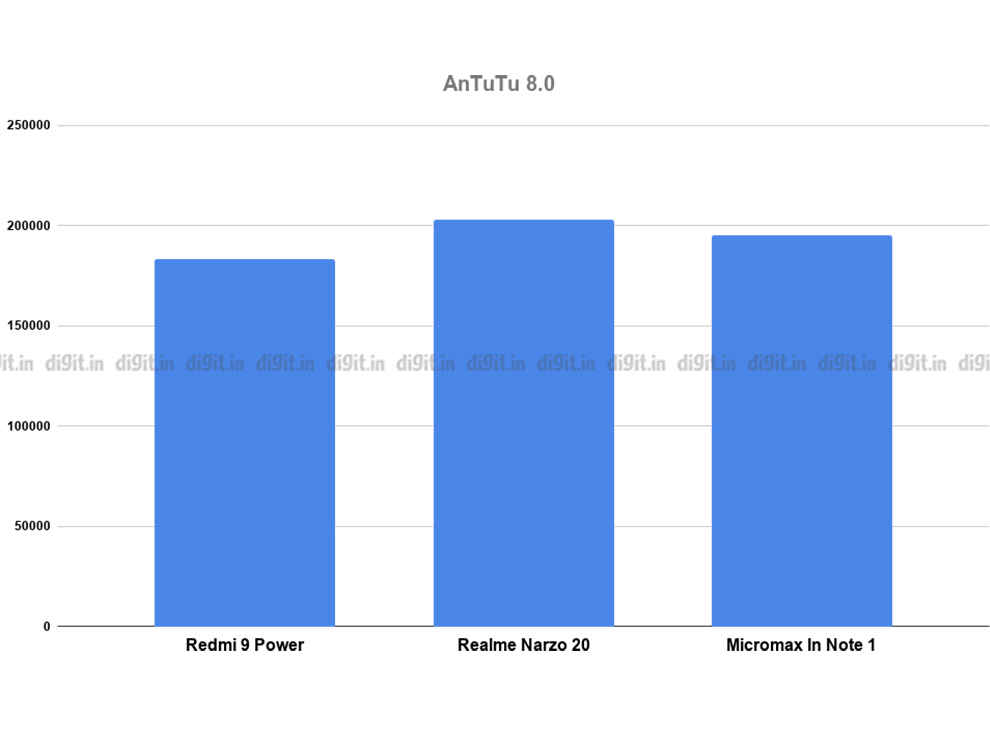
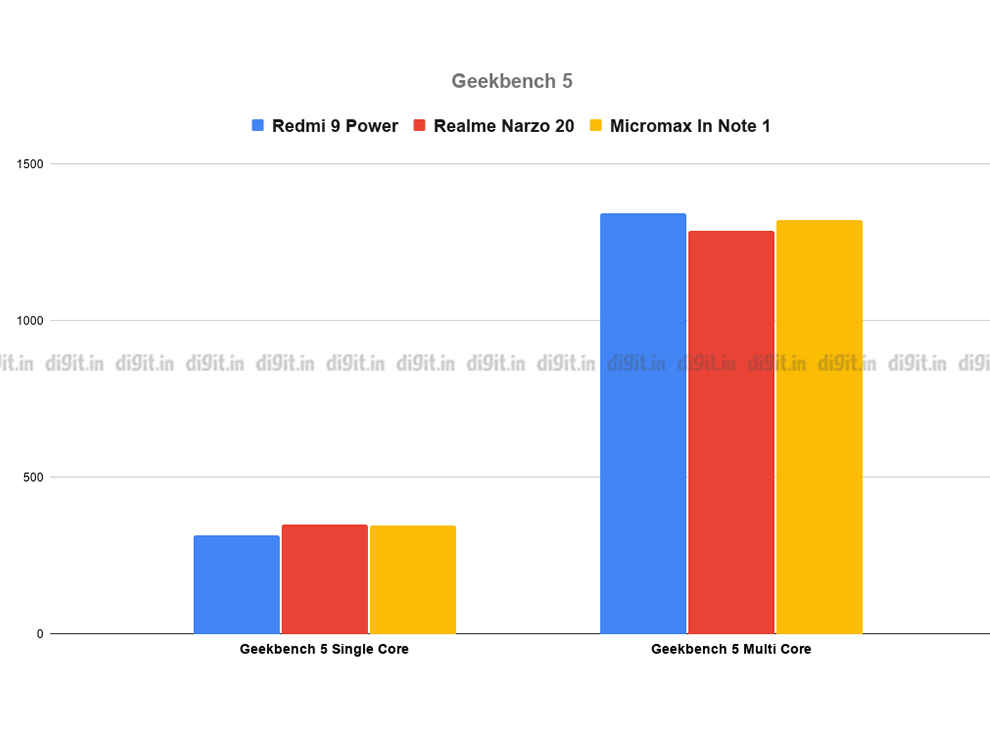
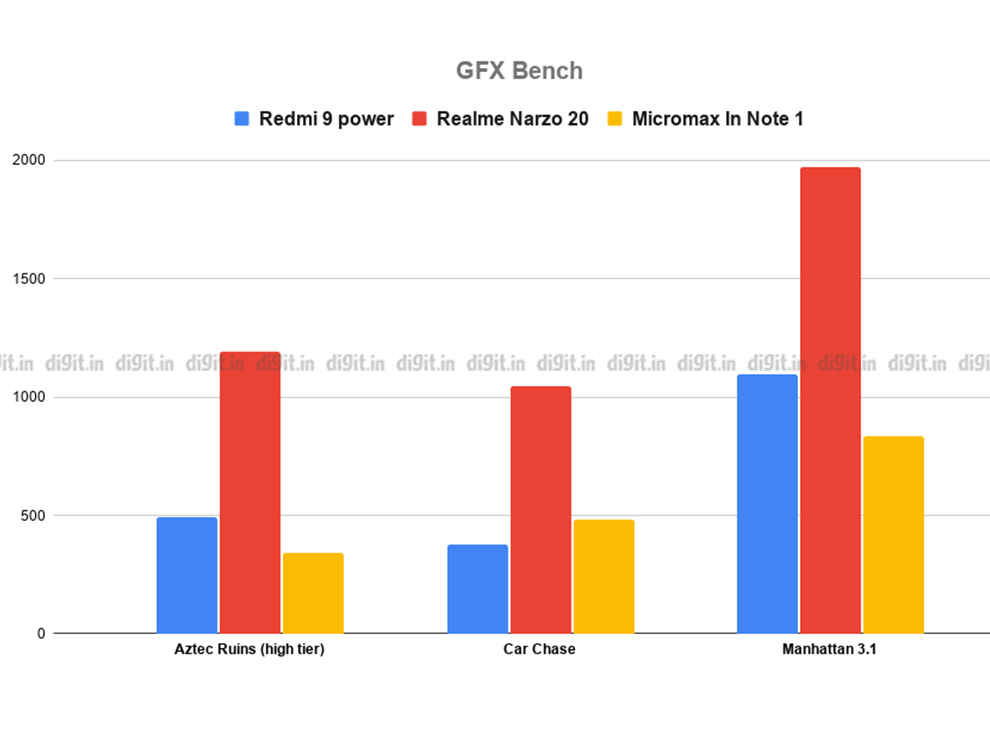
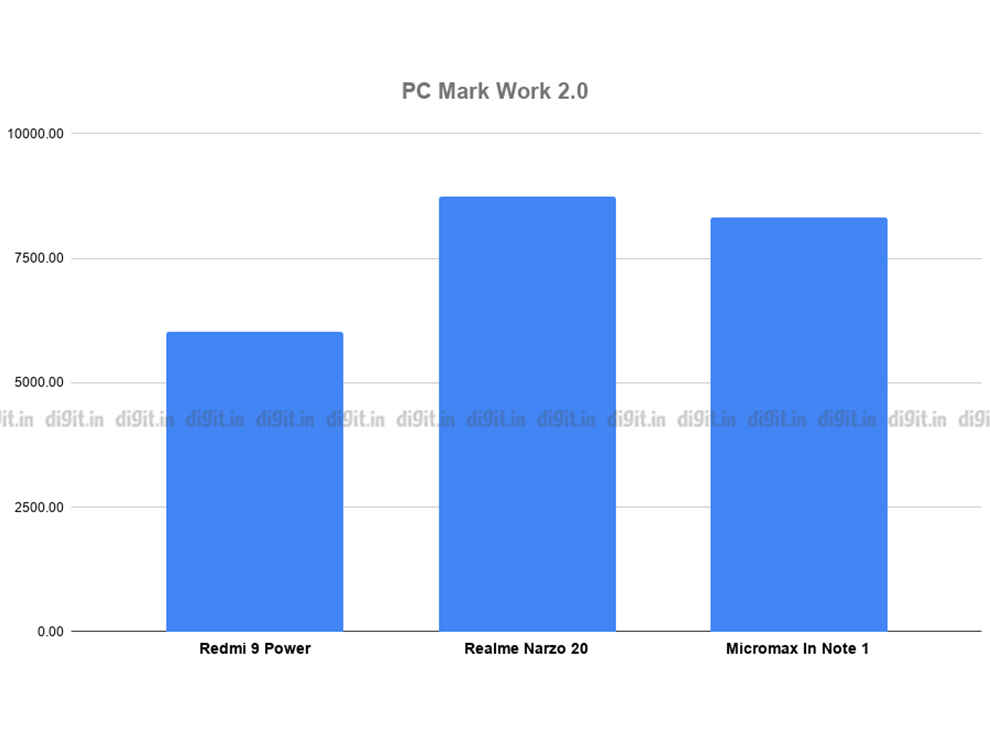
The 9 Power continued to lag before the Narzo 20 and Micromax In Note 1 in Geekbench Single Core, however, in Multi Core, it did pull ahead of both devices by a slight margin. Coming to GFX Bench, we saw the Realme Narzo 20 completely dominating the Redmi 9 Power, however, it did manage to score more than the Micromax In Note 1 in this benchmark. In PC Mark Work 2.0, again the Redmi 9 Power lagged behind both phones. So, benchmark score-wise, the Redmi 9 Power doesn’t do so hot. In fact, it even loses out to the Redmi 9 Prime and the Redmi Note 9 in AnTuTu even though the Note 9 costs the same now, and the 9 Prime is cheaper at the moment.
When it comes to gaming, the Redmi 9 Prime does a mediocre job. We played a game of Call of Duty and recorded an average FPS of 29 with 66 per cent stability at high graphics and medium frame rate in the Gamebench app. Lower the graphics to Medium and the game was playable but it does feel choppy and laggy at times and gets warm pretty quickly. The battery holds up pretty well though when gaming. We recorded a 5% battery drop after 15 minutes of Call of Duty. All in all, playing simple games like Candy Crush will be a breeze on this phone, but more graphically-intensive titles like COD and Asphalt 9 don’t run smoothly. Which is to be expected, at this price point.
Benchmark scores aside, the Redmi 9 Power runs day-to-day operations pretty smoothly, for the most part. Apps load fairly quickly, albeit we did notice that the camera takes longer than ideal to be ready to shoot. Multitasking on the phone was a decent experience as well but the 4GB RAM does limit the number of apps that can stay open in the background simultaneously. Also, we encountered a few stutters when moving between apps in the multitasking window. Still, tasks such as sending messages, sending emails, browsing through social networks and more were all smooth, for the most part. All in all, if you’re a light user, the Redmi 9 Power will get you through most of your tasks swimmingly.
Coming to the software, the Redmi 9 Power comes with Android 10 with MIUI 12 atop. Now, if you’re familiar with MIUI, you will know that it comes with a galore of bloatware in the form of preinstalled apps and ads. One app named ‘Get Apps’ got painstakingly annoying since it repeatedly sends you notifications, recommending you to install some apps. Some of the preinstalled apps include Dream 11, Netflix, Amazon, Facebook, LinkedIn, Osom Rummy, Moj and a few more Mi apps. Thankfully, you can uninstall most of these apps apart from Get Apps, which is Xiaomi’s official app store.
Redmi 9 Power: Display
One of the things we enjoyed on the Redmi 9 Power was watching content on YouTube and other OTT platforms due to the crisp FHD+ display and, of course, the stereo speakers. The smartphone houses a 6.53-inch IPS LCD display that works well for content consumption, although the dewdrop notch does mar the immersiveness to an extent. The colours are vibrant (with an option for a more natural look in Settings), however, the viewing angles are mediocre.
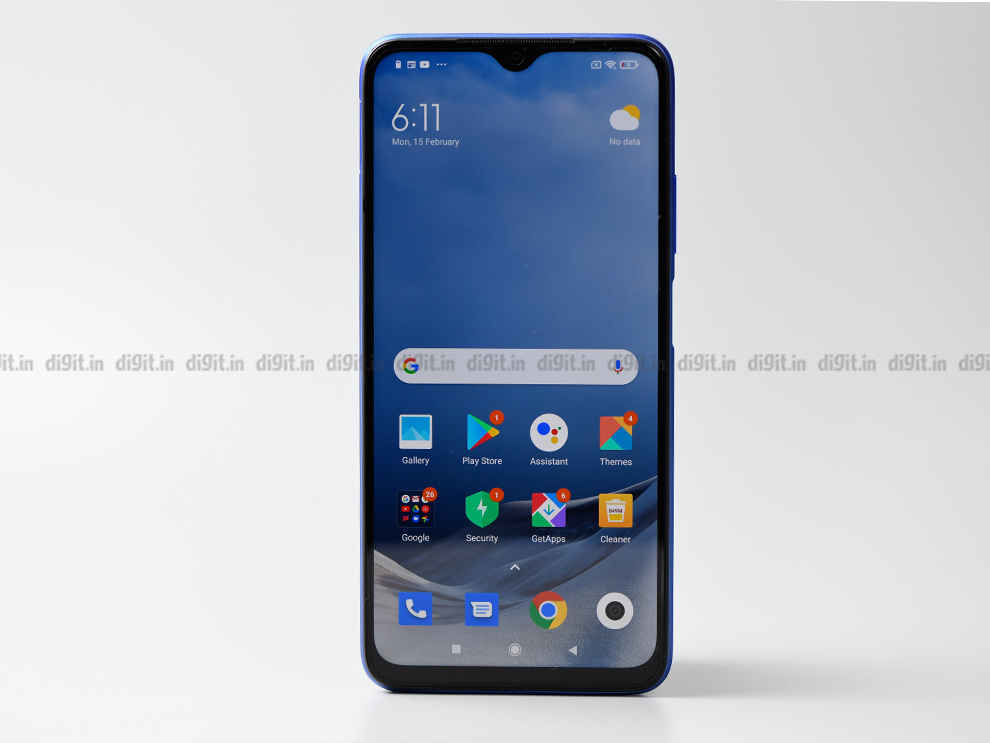
You also get support for Widevine L1, so you can enjoy HD content on OTT platforms without any issues. The display is bright enough to view indoors. It is rated at 400 nits, and we managed to record a peak brightness of 220 nits. The phone can also go as low as 5 nits, although the Poco M3 records a mere 1.2 nits when at its lowest brightness level. The display, however, is slightly problematic to view outdoors, under direct sunlight. We struggled to use the phone even the max brightness, which is a tad concerning. Nevertheless, we are glad Xiaomi provided an FHD+ display since companies usually tend to settle for an HD+ display at this price point.
Redmi 9 Power: Battery life
Now, we move on to what we consider is the primary highlight of the Redmi 9 Power. No second guesses there, it’s the gargantuan 6,000mAh battery. The massive cell does exactly what it is supposed to do, which is give you enough juice to ‘Power’ through about 2 days of moderate usage and about a day and a half of heavy usage.
By heavy usage, we mean playing games, watching HD content on Netflix, GPS navigation, and the works, which is pretty impressive. The phone lost 6 per cent battery with 30 minutes of streaming on Netflix and about 7 per cent battery when using Google Maps for an hour. Now, these numbers are slightly lower than what the Poco M3 achieved but its plenty for most users.
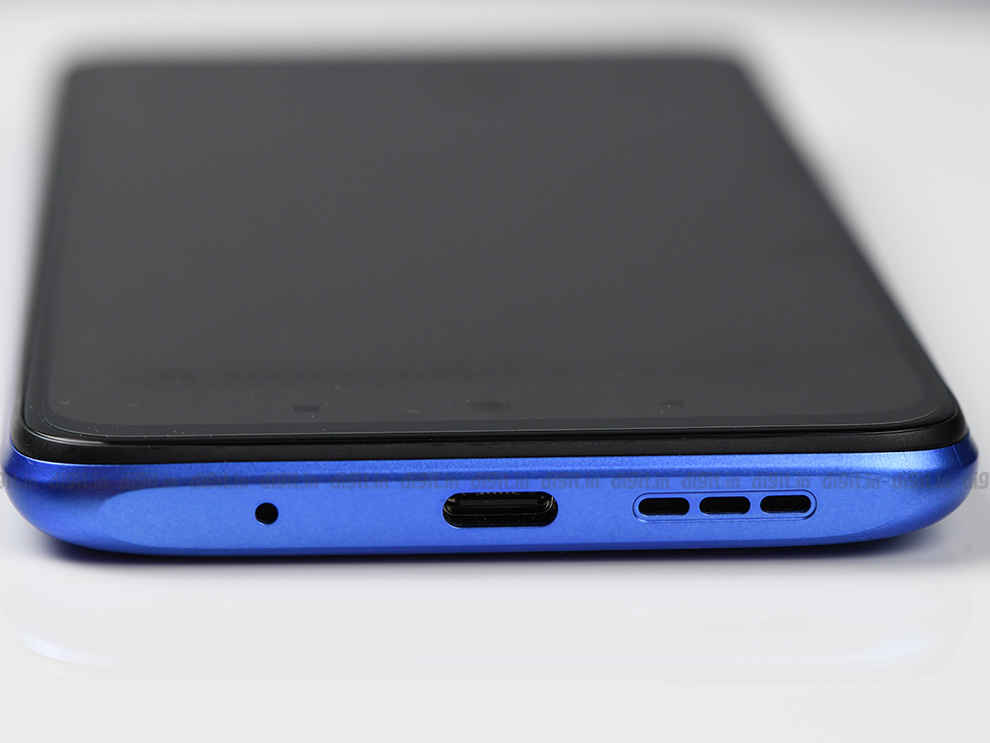
If you’re a light user, you can stay away from the charger for days. If you’re on the opposite end and use your phone heavily, there’s an Ultra Battery Saver Mode than extends battery life even further. When you do need to charge the phone, the battery goes from empty to full in about 2 hours and 50 minutes, which is on the slower side. This does make you wonder why the company didn’t just push for 22W charging when the charger in the box is capable of delivering those speeds.
Redmi 9 Power: Camera performance
The Redmi 9 Power packs a quad-camera setup that includes a 48MP primary shooter, an 8MP ultra-wide-angle lens, a 2MP macro lens, and a 2MP depth sensor. Xiaomi’s camera app is still the same, packed with plenty of features, camera modes, and even filters, and it will keep new users busy for quite some time. What we found slightly aggravating, was the fact that the Macro mode is tucked away in a different sub-menu, which makes it hard to find. The photo samples below are downsized for the web, you can check out our Flickr gallery for high quality images taken from the Redmi 9 Power.
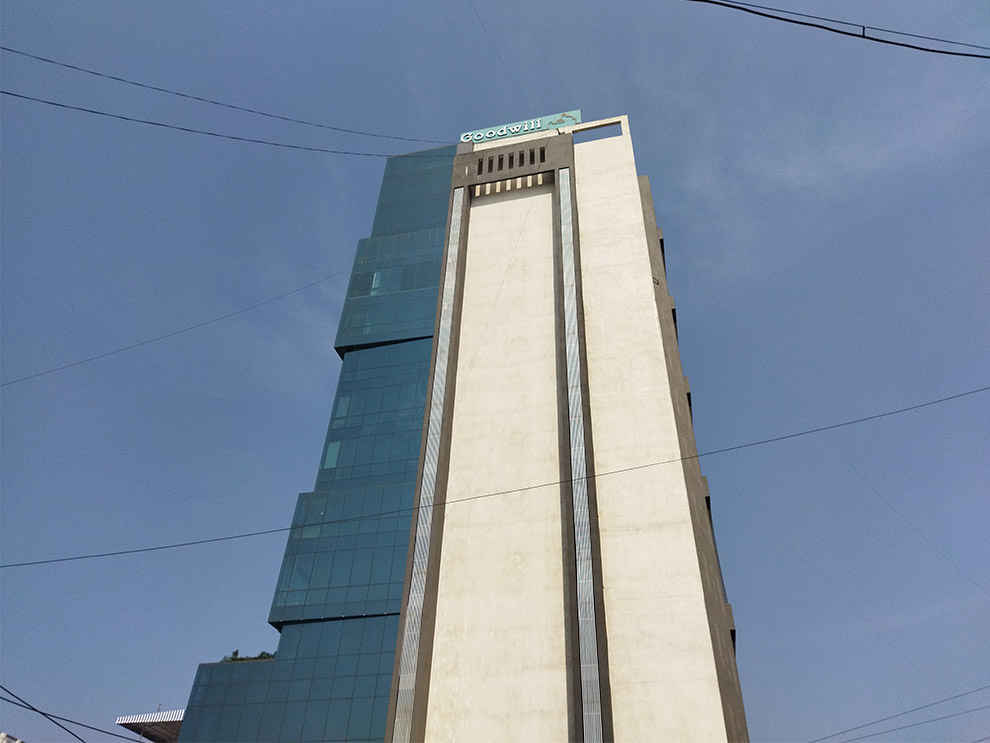

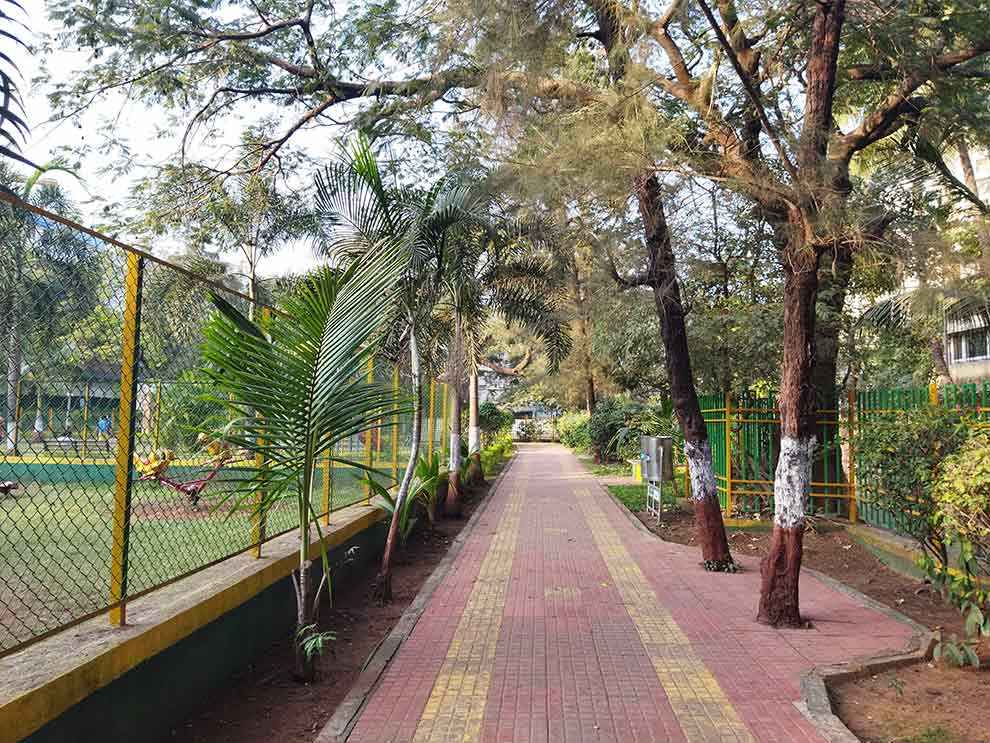
Now coming to the primary lens, daylight photos taken on the Redmi 9 Power are decent. The shots are generally sharp and vibrant when shot in bright daylight, with a passable amount of detail. The dynamic range, while lacking in some aspects, is acceptable for this price range. In particularly tricky situations, the shadows do lack detail and the highlights are blown out as well.
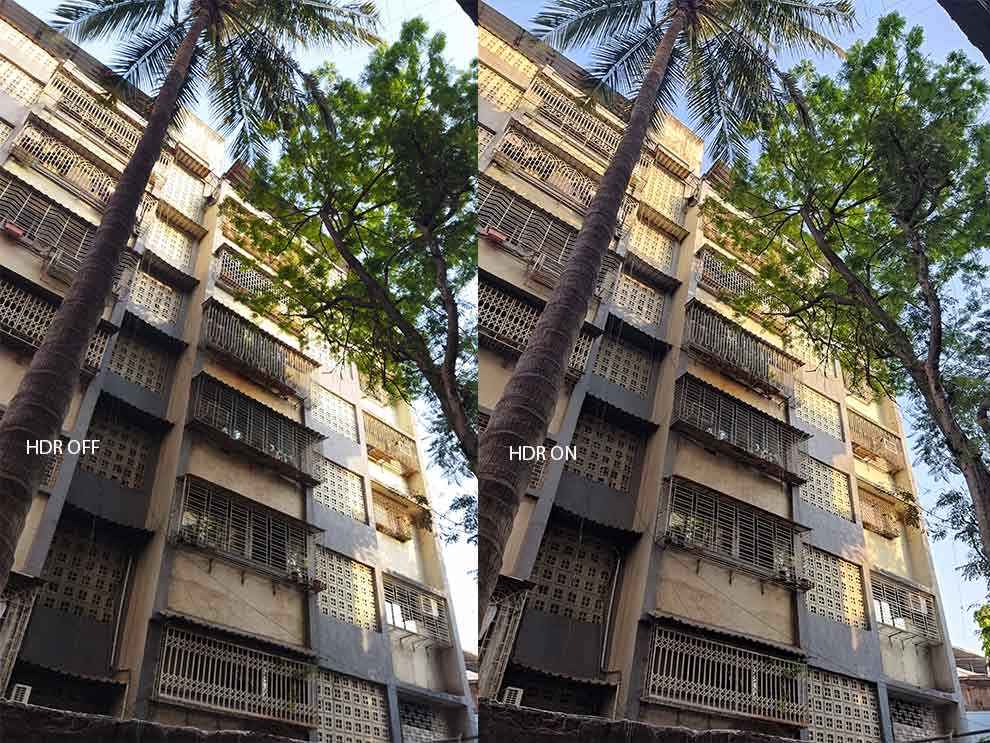
We also played with HDR mode to see how it would affect the dynamic range, and we did see some more detail in the shadows, although we were pixel-peeping. The camera’s Pro Color mode adds a pop of colour to shots taken from the main camera, however, looks cartoonish at times, as we’ve seen on other Xiaomi devices. You also get a manual mode, which is pretty neat.

For close-ups, the primary lens does pretty well with some click natural background blur making it instantly social-media worthy. We did notice a few focusing issues though. The 2MP macro lens, honestly speaking, is just terrible. Due to the lack of auto focus, it is extremely tricky to get an acceptable shot, and even when you do the details are abysmal.
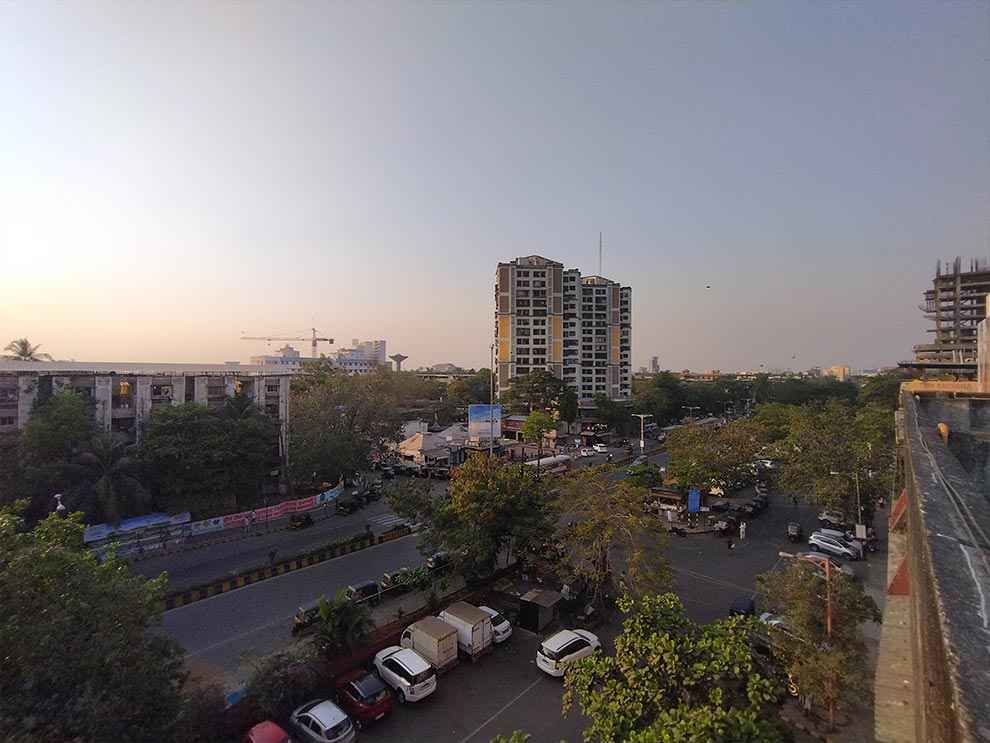
The 8MP ultrawide lens produces strictly average shots in daylight with mediocre dynamic range. While it’s not the best lens, it is great to have it as an option, especially when competitors such as the Poco M3 have ditched the ultrawide lens and stuck to a triple-camera module.
Portrait shots, on both the rear and selfie cameras, has decent edge detection, but the dynamic range is this mode suffers. Also, stray hair and tricky edges cause the edge detection to mess up, but that’s to be expected at this price. Selfies from the 8MP camera are decent, there’s a bit too much softening going on, but it is acceptable.

Finally, we move on to low light photography, where the shots from 48MP primary lens suffer from a lot of noise and lack detail, especially in the shadows. Using the wide angle lens in low light is simply not advised since the problem of noise aggravates even more. Additionally, the camera struggles to lock focus a lot in low light. There is a dedicated night mode for the primary lens which results in shots that are slightly more presentable and brighter.
Low light selfies lack detail and the photos are, again, too soft for our liking. There’s an abnormal amount of skin smoothening going on and in low light, there’s an odd yellowish colouring in the shots which we didn’t find flattering.
Video recording tops out at 1080p at 30fps for the primary and selfie camera and is pretty decent on both cameras in this price segment, but there’s no stabilisation which makes for some shaky videos if you don’t have steady hands, or if you’re walking or running.
Verdict
There are 2 main areas where the Redmi 9 Power stands out – the stellar battery life and the inclusion of dual stereo speakers. If you’re someone who consumes a lot of media on your phone, the dual stereo speakers, FHD+ display and the ability to stream HD content on YouTube and Netflix make this a sweet offering in this area. In most other areas, the phone is what you’d expect at this price range. The Poco M3 costs the same and makes it case for itself due to the extra 2GB of RAM and a premium back finish, but if you really value the ultrawide lens, the Redmi 9 Power includes that, while the Poco M3 doesn’t. Also, MIUI which sits atop Android 10 is still as aggressive as ever when it comes to ads and bloatware, so keep that in mind when making your purchase decision.
[ad_2]
Source link





